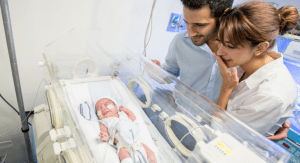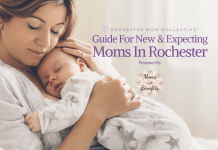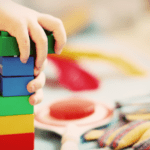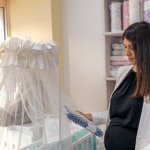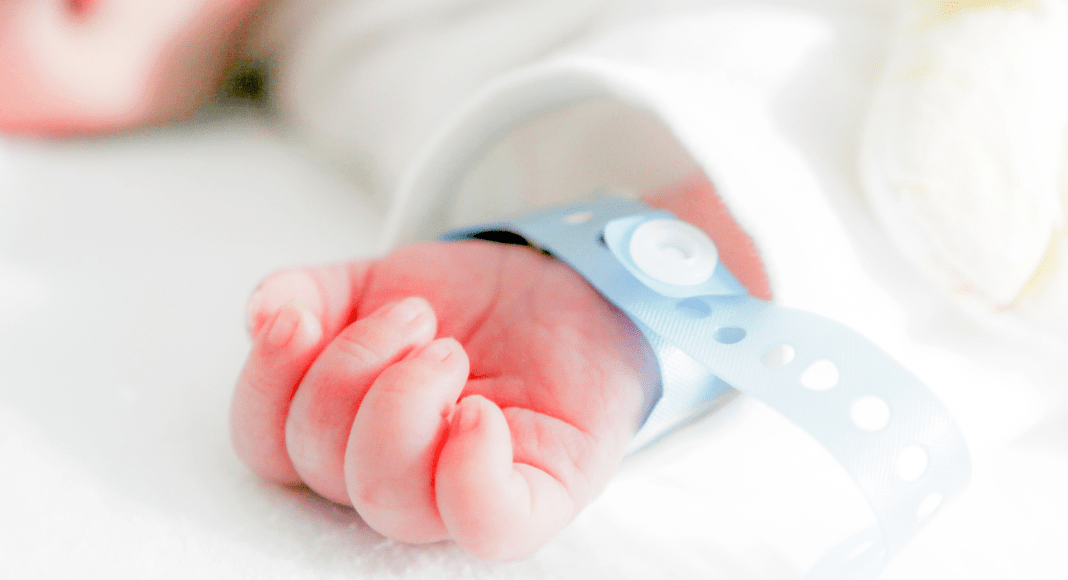
April is Congenital Diaphragmatic Hernia (CDH) Awareness month. Odds are, you’ve never heard of CDH. I hadn’t either, until my son was diagnosed with it during a routine ultrasound.
What is CDH? CDH is a life-threatening condition. It occurs when a baby’s diaphragm does not fully form in-utero, leaving a hole between the abdomen and chest cavity. This allows organs—such as intestines, stomach, and liver—to herniate up into the chest, preventing the lungs from developing. Babies with CDH typically cannot breathe on their own at birth. They require immediate resuscitation upon delivery, various levels of life support, surgery to repair the diaphragm, and more while in the NICU. Coming home, they might need supplemental oxygen, feeding tubes, therapies such as PT and OT, and medications to manage CDH-related symptoms.
Receiving this diagnosis was devastating, and some doctors I met with did not give me much hope for my son’s case of CDH. But as I learned more, I realized there is so much hope for babies with this condition. Today, I am the proud mom of a two-year-old CDH survivor. He is living a happy, healthy toddler life. If you met him, you’d never know he had ever been sick.
In celebration of Congenital Diaphragmatic Hernia Awareness Month, I’m sharing what I wish I had known about CDH on diagnosis day. My hope for this post is that it can raise awareness of this condition, and give hope to newly-diagnosed families in the Rochester area.
What I Wish I Had Known About CDH on Diagnosis Day
CDH impacts about 1 in every 3,600 births in the US. Even though it is not a widely-known condition, it affects a similar number of babies each year as Cystic Fibrosis and Trisomy 18, respectively.
CDH is NOT a death sentence. Not long ago, the CDH survival rate in the U.S. was 50%. In recent years, the survival rate has improved to 70%. Better yet, there are CDH specialty hospitals with survival rates over 90%. The bottom line: CDH is a treatable condition with the right care team.
Second opinions can save lives. CDH is a spectrum and every case is different. Some cases are mild, some cases are severe. Some cases are coupled with other anomalies. Finding a medical team that feels confident in each baby’s specific case of CDH is crucial. That’s where second opinions come in. I have met families that had an excellent prognosis and outcome getting CDH treatment right here in Rochester. I’ve also met families – like mine – who were given a better prognosis elsewhere and temporarily relocated for care at a specialty hospital. When you’re dealing with a “rare” diagnosis, doctors typically understand and support getting a second opinion. There is no right or wrong answer on where to seek care. The most important thing is to find a team that feels confident in your baby, and that you feel hopeful with.
If your baby is facing a CDH diagnosis, an excellent program to consider for a second opinion is Johns Hopkins All Children’s Hospital Center for Congenital Diaphragmatic Hernia (led by Dr. David Kays). It is the country’s first dedicated inpatient unit for CDH.
Babies born with CDH can live full, happy lives. Quality of life was a significant concern when I received my son’s CDH diagnosis and learned about the medical interventions he’d need. But the more CDH families I spoke with, the more I realized that these kids can grow up to live happy, healthy, normal lives. (Whatever “normal” even means!). Yes, it is a tough start. Yes, many kids with CDH follow their own timeline to meet milestones. And yes, many need extra support – medical or otherwise – along the way. But there is no shortage of happy endings to a CDH diagnosis. There are child, teen, and adult CDH survivors living full lives. And while CDH is a spectrum, many survivors do not have significant lasting complications. You can read survivor stories here.
NICU life is hard – but it doesn’t last forever. The NICU journey for CDH babies is not straightforward. Most will need weeks to months in the hospital and significant medical intervention. This time is often described as a “roller coaster.” Many babies take two steps forward and one step back as they stabilize, recover from surgery, wean off life supports and meds, work on gaining weight, and more. It can be an extremely challenging and uncertain time. My husband and I both had a lot to process once we were home from the NICU. But being well on the other side of the NICU journey, I can say with confidence that every hard day was well worth it.
Support doesn’t stop at discharge. The transition home from the hospital with a medically complex baby is by no means easy. It is a big adjustment, with a steep learning curve, and a busy appointment schedule in the beginning. We are fortunate to live in a community with significant post-discharge resources to help light the path forward. Rochester has incredibly supportive follow-up clinics and doctors at Golisano Children’s Hospital. Monroe County has a wonderful Early Intervention program and therapists. And there are several perinatal mental health professionals locally to support parents.
The journey will change you in profound ways. There is no shortage of heavy stuff to process and work through with a CDH diagnosis and NICU stay. For all the challenges along the way, there are silver linings. Navigating any potentially fatal diagnosis can give you new perspective and a renewed appreciation for life. You learn not to take a day for granted; you learn the depth and breadth of support around you; you learn what you are made of and capable of doing. And you witness miracles seeing your child rise and overcome so many challenges that once seemed insurmountable.
Support for CDH Families
When my son was diagnosed, it took me a while to find support – but there is a lot out there. Below are some of my favorite resources as a CDH parent.
- Tiny Hero: Real Hope for CDH – A nonprofit dedicated to CDH. It provides peer support, relocation grants for care at specialty hospitals, and care packages to CDH families in the NICU. If you are looking for a second opinion or relocation support, Tiny Hero can help.
- Congenital Diaphragmatic Support Network by Tiny Hero – An active Facebook group for CDH families to ask questions, celebrate wins, and connect with other families nearby or at the same hospital.
- Johns Hopkins All Children’s Hospital Center for Congenital Diaphragmatic Hernia – The first inpatient center in the country dedicated to CDH. It is the specialty team I recommend families call for a second opinion if they do not receive a favorable prognosis locally.
- The CDH Foundation – A nonprofit dedicated to CDH. It facilitates monthly virtual support groups for families of survivors and bereaved families, and provides grants to families facing re-hospitalization.
- One of the best types of support is peer support from families who have been there – from diagnosis, to delivery, to discharge and beyond. Any of the organizations above can connect newly-diagnosed families to peer support.
Final Thoughts
While CDH does not have the wide-spread awareness it deserves just yet, I feel optimistic about the future of this condition as the parent of a survivor. There is increasing clinical research, collaboration among providers, and peer support networks for CDH. The first clinic focused on adult CDH survivors even opened this year. While it remains a scary, serious, and life-threatening condition, I believe that the future of CDH care looks bright.



